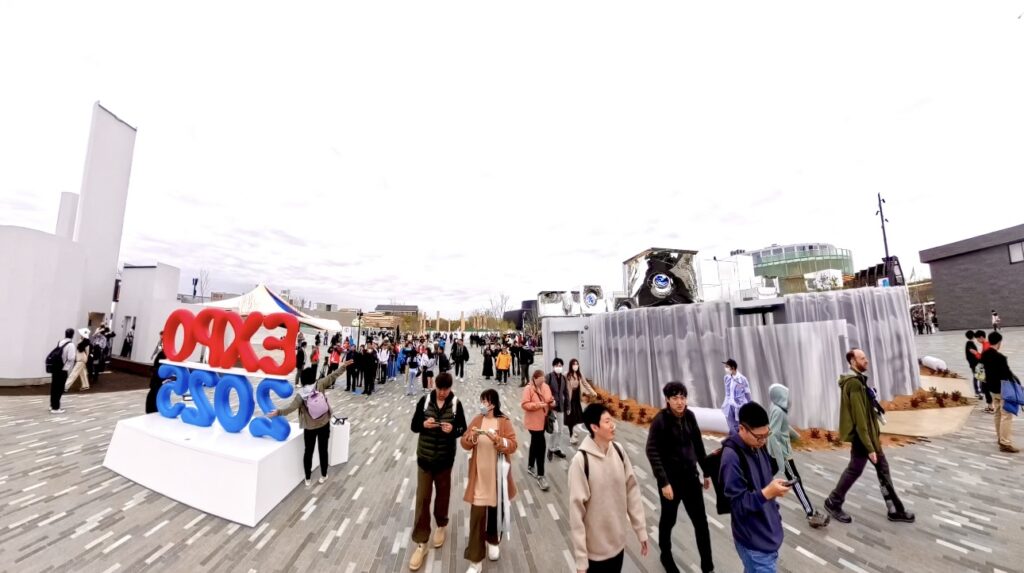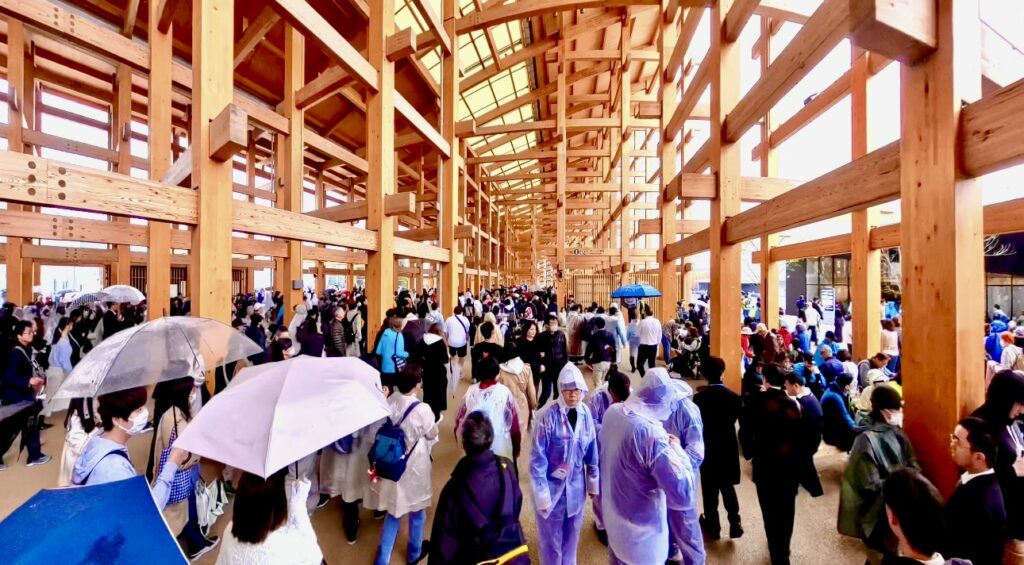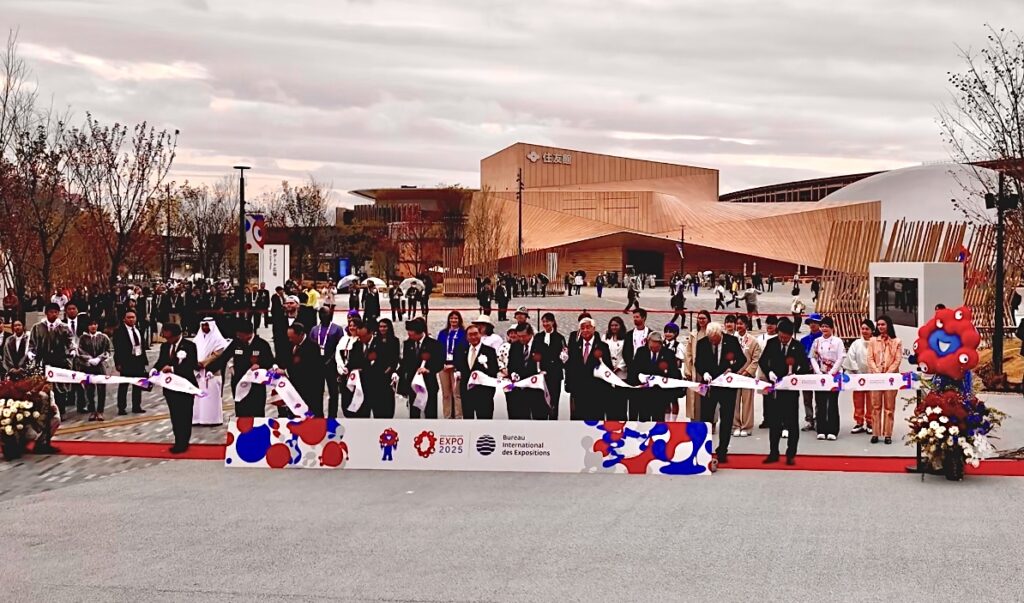





OSAKA: A tape-cutting ceremony was held to officially open the Osaka-Kansai Expo 2025 on Sunday, attended by several leading Japanese officials responsible for this global event that will last six months.
The Minister in charge of International Exposition, ITO Yoshitaka, the Minister of Economy, Trade and Industry, MUTO Yoji, the Minister of Defense, NAKATANI Gen, the Commissioner General of the 2025 World Exposition in Japan, HANEDA Koji, Osaka Governor YOSHIMURA Hiroshi, and the Mayor of Osaka City, YOKOYAMA Hideyuki, all participated in a joyful tape-cutting ceremony that was filled with cheers.
The Expo will run until October 13 on Yumeshima, an artificial island in Osaka Bay, with 158 countries and regions participating. The government estimates that over 28 million people from Japan and abroad are expected to visit.
Pavilions from participating countries and organizations are surrounded by the 2-kilometer perimeter of the Grand Ring, recognized by Guinness World Records as the world’s largest wooden architectural structure.
Based on visitor numbers, the government estimates the event’s economic impact will be approximately $20 billion nationwide.
Japan has hosted the World Exposition twice. The most recent event took place in Aichi Prefecture in 2005, while Osaka previously held the exposition in 1970. The 1970 event attracted over 64 million visitors, primarily from Japan, and it became a symbol of Japan’s emergence as an economic power.
While dignitaries celebrated the end of years of preparation, a large crowd of visitors formed outside in joyful anticipation of the opening. However, complaints and protests further dampened the already rainy day at the venue.
Oishi Akiko, a member of the House of Representatives from the Reiwa Shinsengumi Party, led a demonstration in Osaka against the Expo. She warned about the potential risks of methane gas leaks at the venue and expressed concerns regarding the significant amount of public funds being allocated to the event.
Oishi live-streamed on YouTube with around 2,000 viewers, using slogans like “We don’t want the Expo” and “No methane gas.”
Local media reported additional complaints, including the large crowds at the entrance and other minor issues that the Japanese considered far from perfect.
The organization behind the Expo has implemented an electronic ticketing system that allows visitors to reserve their visit for a specific date and time. However, long lines were observed on Sunday even before the official opening.
Due to occasional heavy rainfall, the road between the Expo venue and Yumeshima Station on the Osaka Metro Chuo Line, the sole rail access to the venue, experienced significant congestion.
Some visitors commented that the Expo venue is too complex and challenging for the elderly to navigate.
Confusion arose when it was revealed that cash was not accepted at the Expo, and visitors were prohibited from bringing canned baby formula.
Many people were frustrated by the two-and-a-half-hour wait to enter, and reports indicated that even in the afternoon, long queues persisted at the entrance gate.
The rain affected the opening day, leading to the cancellation of the Japan Air Self-Defense Force’s “Blue Impulse” exhibition display.
Some visitors experienced difficulties printing their electronic ticket QR codes due to poor mobile phone signals.
Due to bad weather, both the Self-Defense Forces’ flying display and the futuristic “Flying Car” demonstration flight were canceled.
The “Flying Car” was expected to be one of the main attractions at the Expo. However, due to delays in obtaining safety certification, visitors were not allowed to participate in flights. A test flight had been scheduled for the afternoon, but it was canceled because of rainy weather.